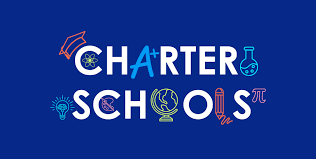Charter schools have become a significant part of the education landscape, offering an alternative to traditional public schools. These independently run public schools operate under a charter—a contract with local or state authorities—that grants them flexibility in curriculum design, teaching methods, and administration. While some see charter schools as a solution to improving education quality and providing more choices for families, others argue they can contribute to inequities in the public school system.
The debate over charter schools is complex, involving questions about academic performance, funding, regulation, and equity. This article explores the key benefits and drawbacks of charter schools, helping to assess their impact on education.
What Are Charter Schools?

Charter schools are publicly funded but operate independently of traditional public school districts. They enjoy greater flexibility in decision-making, including:
- Curriculum design and teaching methods
- School calendar and scheduling
- Hiring practices and teacher requirements
However, in exchange for this autonomy, charter schools are held accountable for student performance and must meet specific goals outlined in their charter agreements. If they fail to meet these standards, they risk closure.
Furthermore, charter schools vary widely in focus. Some emphasize STEM education, the arts, or college preparation, while others cater to specific student populations, such as those with learning disabilities or at-risk youth.
Benefits of Charter Schools
Supporters of charter schools argue that they provide innovative learning environments, improve educational outcomes, and give families more choices.
1. Increased School Choice for Families
Charter schools offer an alternative for families dissatisfied with their local public schools. Parents can choose a school that best fits their child’s learning needs, whether it’s a specialized curriculum, smaller class sizes, or a different teaching approach.
2. Greater Flexibility and Innovation
Because charter schools operate independently, they have the freedom to experiment with new teaching methods and curriculum models. Many charter schools focus on:
- STEM programs to prepare students for technology-driven careers.
- Project-based learning that emphasizes real-world applications.
- Personalized learning tailored to individual student needs.
This flexibility allows charter school to implement programs that may not be possible in traditional public schools due to bureaucratic constraints.
3. Potential for Improved Student Outcomes
Studies show mixed results, but some charter schools outperform traditional public schools, particularly in low-income urban areas. High-performing charter networks, such as KIPP (Knowledge Is Power Program) and Success Academy, have demonstrated significant academic gains among disadvantaged students.
4. Increased Accountability
Unlike traditional public schools, which can struggle with underperformance for years, charter schools must meet their contractual performance goals. If they fail to do so, they can be shut down or replaced, ensuring a level of accountability that some argue is lacking in public schools.
5. Competition Encourages Public School Improvement
Some argue that the presence of charter schools creates competition, pushing traditional public schools to improve their standards and teaching quality. The theory is that if public schools lose students to charters, they will be incentivized to make necessary reforms to retain students.
Drawbacks of Charter Schools
While charter school offer benefits, critics argue that they can weaken public education, lack proper oversight, and contribute to inequities.
1. Unequal Access and Selective Enrollment
- Charter schools do not charge tuition, but they can create barriers to entry. Some require applications, lotteries, or parental involvement, making them less accessible to low-income families.
- They may not accommodate all students, particularly those with special needs or behavioral challenges, leading to accusations of “cherry-picking” high-performing students.
2. Funding Issues and Impact on Public Schools
- Charter schools receive public funding based on student enrollment, meaning when students leave traditional public schools for charters, funding follows them. This can financially strain public schools that still have fixed costs (e.g., building maintenance, staff salaries).
- In some cases, public schools are forced to cut programs, close schools, or increase class sizes due to declining enrollment and reduced funding.
3. Inconsistent Performance
- While some charter school excel, many perform no better (or worse) than traditional public schools.
- A national study by the Center for Research on Education Outcomes (CREDO) found that while some charters outperform public schools, others lag behind, particularly in rural and suburban areas.
4. Lack of Oversight and Regulation
- Charter schools operate with greater autonomy, but this can lead to mismanagement, fraud, and lack of transparency.
- Some charter schools have faced scandals involving misuse of public funds, conflicts of interest, or poor governance.
- Unlike traditional public schools, charter teachers may not be required to have state certifications, raising concerns about teacher qualifications and student learning quality.
5. Increased Segregation in Schools
- Some studies suggest that charter school contribute to racial and socioeconomic segregation.
- Because families choose schools, there is a risk that charter schools can reinforce racial and economic divisions, rather than providing equal opportunities for all students.
The Charter School Debate: Key Questions
1. Do Charter School Improve Student Achievement?
- Some charter networks show impressive results, but overall performance varies widely.
- Charter school success often depends on leadership, funding, and the student population served.
2. Are Charter School Fair to Public Schools?
- Charter school receive public funding, but their financial impact on traditional schools remains a contentious issue.
- Some argue that charters weaken public education by diverting resources. Others believe they provide necessary alternatives to failing public schools.
3. Should Charter Schools Be Held to Stricter Standards?
- While charters must meet accountability goals, some face less regulation than public schools.
- Increased oversight could prevent financial mismanagement and ensure fair access for all students.
The Future of Charter Schools
The debate over charter school is far from settled. As educational needs evolve, policymakers continue to explore ways to balance choice, innovation, and equity.
Potential Reforms and Solutions:
- Stronger Oversight and Accountability: Increasing transparency in funding and performance data can prevent fraud and ensure educational quality.
- Equitable Enrollment Practices: Ensuring fair access for students with disabilities, English language learners, and low-income families.
- Balanced Funding Models: Developing financial systems that support both charter and traditional public schools without disadvantaging either.
- Teacher Training and Standards: Requiring charter school teachers to meet certification requirements similar to those in public schools.
While charter schools remain a controversial part of education policy, they offer valuable lessons about school choice, innovation, and accountability. Moving forward, the challenge is to maximize their benefits while addressing their limitations to ensure a fair and high-quality education for all students.
Conclusion
Charter schools play a dynamic role in the education system, offering both opportunities and challenges. They provide families with choices, encourage innovation, and increase accountability, but they also raise concerns about equity, funding, and oversight.
Ultimately, the success of charter school depends on how they are implemented, regulated, and integrated into the broader public education system. Striking the right balance between flexibility and accountability is crucial in ensuring that all students—regardless of background—receive a high-quality education.
Key Takeaways:
- Charter schools provide school choice and flexibility but face accountability concerns.
- They can improve student outcomes but show mixed performance across regions.
- Funding and equity issues must be addressed to prevent harming traditional public schools.
- Greater oversight and fair enrollment policies can help balance the benefits and drawbacks.
As the charter school movement continues to grow, ongoing dialogue and policy adjustments will shape their role in the future of education. 📚🏫
From delicious recipes to expert entertaining tips, Decology is your go-to source for all things food and fun!


